Madison
Symphony Orchestra Program Notes
December 1-2-3, 2023
98th Season / Subscription Program 4
J. Michael Allsen
 The Mass in
B minor, Johann Sebastian
Bach’s most monumental
sacred work, was
completed in the
last year of his life, but it is actually an immense
patchwork of movements
assembled over the course of some thirty years. The
choruses heard on this
program date from the 1730s, when Bach was
becoming dissatisfied with
the limited resources available to him as Kantor of
Lewipzig Thomaskirche. He
made several attempts during this period to better his
situation. In 1733, he
sent a “Missa,” a setting of the Kyrie
and Gloria of
the mass, to the
opulent Dresden court of the Elector of Saxony. Bach hoped
that this sample of
his work, which he referred to as a “trifling product of
that science which I
have attained in Musique,” would lead to a position in
Dresden. In the end, only
a more modest request was granted: that the Elector name
him court composer, a
position of little more than honorary significance. The
chorus Gloria in
excelsis Deo is joyous, with
complex vocal lines intertwining with a trumpet ritornello. At Et in terra
pax hominibus, the mood becomes more pensive, with a
pair of musical ideas
combined in ever more complicated counterpoint.
The Mass in
B minor, Johann Sebastian
Bach’s most monumental
sacred work, was
completed in the
last year of his life, but it is actually an immense
patchwork of movements
assembled over the course of some thirty years. The
choruses heard on this
program date from the 1730s, when Bach was
becoming dissatisfied with
the limited resources available to him as Kantor of
Lewipzig Thomaskirche. He
made several attempts during this period to better his
situation. In 1733, he
sent a “Missa,” a setting of the Kyrie
and Gloria of
the mass, to the
opulent Dresden court of the Elector of Saxony. Bach hoped
that this sample of
his work, which he referred to as a “trifling product of
that science which I
have attained in Musique,” would lead to a position in
Dresden. In the end, only
a more modest request was granted: that the Elector name
him court composer, a
position of little more than honorary significance. The
chorus Gloria in
excelsis Deo is joyous, with
complex vocal lines intertwining with a trumpet ritornello. At Et in terra
pax hominibus, the mood becomes more pensive, with a
pair of musical ideas
combined in ever more complicated counterpoint.
 Antonio
Vivaldi was
the most prominent and influential Italian composer of
the late Baroque. He
composed in nearly every genre—some 40 of his operas,
dozens of his sacred
works, and nearly 100 of his chamber works survive—but
it was his 500 concertos
that had the broadest influence. These concertos were
widely circulated and
emulated in Vivaldi’s day, and it was he who established
many of the standard
operating procedures followed by his contemporaries
Bach, Handel, and Telemann
in their concerto writing. Most of his works were
written for use at the
Ospedale della Pietà, the girl’s orphanage in Venice
where he spent much of his
early career. The orchestra he directed at the Pietà
must have been a fine one,
and the concertos were written to feature either Vivaldi
himself (a leading
Italian violinist), other professional musicians
associated with the school, or
the students themselves. His Piccolo Concerto
was probably
written originally for the flautino
(sopranino recorder), but it is most frequently heard
today on the piccolo.
Though we are unsure as who played the solo part
originally, Vivaldi was
associated with at least two fine German recorder
players who taught at the
Pietà, Ignaz Sieber and Ludwig Erdman, and met many
other players who toured
through Venice in the earlyh century. The concerto is in
the standard Baroque
form, with three contrasting movements. The opening Allegro features the usual Baroque
alternation of tutti sections
with more virtuosic writing for the soloist. The Largo is set in the sensuous Siciliano
rhythm. The closing movement, Allegro
molto, has a more sprightly character, and again
leaves plenty of room for
flashy playing by the soloist.
Antonio
Vivaldi was
the most prominent and influential Italian composer of
the late Baroque. He
composed in nearly every genre—some 40 of his operas,
dozens of his sacred
works, and nearly 100 of his chamber works survive—but
it was his 500 concertos
that had the broadest influence. These concertos were
widely circulated and
emulated in Vivaldi’s day, and it was he who established
many of the standard
operating procedures followed by his contemporaries
Bach, Handel, and Telemann
in their concerto writing. Most of his works were
written for use at the
Ospedale della Pietà, the girl’s orphanage in Venice
where he spent much of his
early career. The orchestra he directed at the Pietà
must have been a fine one,
and the concertos were written to feature either Vivaldi
himself (a leading
Italian violinist), other professional musicians
associated with the school, or
the students themselves. His Piccolo Concerto
was probably
written originally for the flautino
(sopranino recorder), but it is most frequently heard
today on the piccolo.
Though we are unsure as who played the solo part
originally, Vivaldi was
associated with at least two fine German recorder
players who taught at the
Pietà, Ignaz Sieber and Ludwig Erdman, and met many
other players who toured
through Venice in the earlyh century. The concerto is in
the standard Baroque
form, with three contrasting movements. The opening Allegro features the usual Baroque
alternation of tutti sections
with more virtuosic writing for the soloist. The Largo is set in the sensuous Siciliano
rhythm. The closing movement, Allegro
molto, has a more sprightly character, and again
leaves plenty of room for
flashy playing by the soloist.
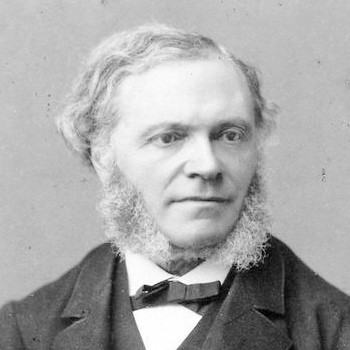 The Belgian organist and composer César Franck would eventually be appointed
organ professor of the
Paris Conservatory in 1872, but he spent nearly all of his
working as a church
musician. He settled permanently in Paris in 1845,
securing a series of
increasingly prestigious organ jobs that led eventually to
his appointment as
organist at the basilica of Ste. Clothilde in 1858, a
position he held until
his death in 1890. His beloved Panis Angelicus
was composed in 1872
for the choir of Ste. Clothilde. It is part of a
13th-century Latin communion
hymn written by St. Thomas Aquinas. Franck’s setting shows
his gift for
presenting a straightforward and lyrical melody above
skillful and complex
counterpoint.
The Belgian organist and composer César Franck would eventually be appointed
organ professor of the
Paris Conservatory in 1872, but he spent nearly all of his
working as a church
musician. He settled permanently in Paris in 1845,
securing a series of
increasingly prestigious organ jobs that led eventually to
his appointment as
organist at the basilica of Ste. Clothilde in 1858, a
position he held until
his death in 1890. His beloved Panis Angelicus
was composed in 1872
for the choir of Ste. Clothilde. It is part of a
13th-century Latin communion
hymn written by St. Thomas Aquinas. Franck’s setting shows
his gift for
presenting a straightforward and lyrical melody above
skillful and complex
counterpoint.
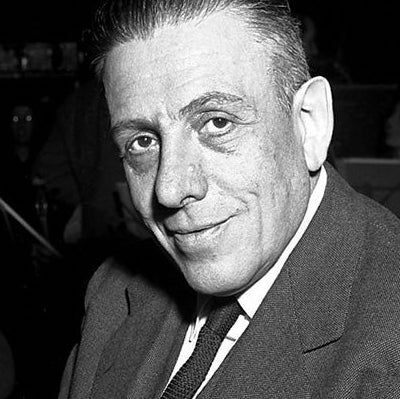 Francis Poulenc, known most often as a musical
humorist, was also a deeply
religious man. He rediscovered his Catholic faith while
in his late 30s, and
many of his choral works, beginning with the Mass in G Major of 1937 were settings of
Latin religious texts. Poulenc's
religious vision reflected his own joie
de vivre, and his religious music is never pompous
or conventional. The Gloria,
one of Poulenc’s last completed works, was written in
1959-60, for a commission
from the Koussevitsky Music Foundation, and first
performed in Boston in 1961. Poulenc
divides the traditional text of the Gloria, part of the
Latin Mass, into six
sections, three of them performed here. The music
reflects both a deep
understanding of the text and Poulenc’s own joyful
spirituality. The opening
movement begins with delicate orchestral textures, but
soon gives way to exuberant
calls of Gloria—a
word returns
constantly throughout this movement. Nowhere in the
Gloria is Poulenc’s sense
of humor more evident than in the witty Laudamus
te. Only in the central section (Gratias
agimus tibi gloriam tuam), does the mood become
sober, but even here, there
is a sense of tongue-in-cheek dignity that shows that
Poulenc’s praises are
offered with a cheerful spirit. The final movement, Qui sedes ad dexteram Patris, beginning
with an intonation by men’s
voices of the opening prayer, returns to the exalted
mood of the first
movement. Poulenc expands on this text, an invocation of
the the Trinity, in an
elaborate development section, but the movement closes
with hushed Amens
from the chorus and soprano. [MSO historical
note: In 1963, just two
years after its premiere, The Madison Civic Chorus and
Madison Civic
Symphony—predecessors of today’s chorus and orchestra,
and then under the direction
of Roland Johnson—gave the first Midwestern
performance of this now-standard
work. - M.A.]
Francis Poulenc, known most often as a musical
humorist, was also a deeply
religious man. He rediscovered his Catholic faith while
in his late 30s, and
many of his choral works, beginning with the Mass in G Major of 1937 were settings of
Latin religious texts. Poulenc's
religious vision reflected his own joie
de vivre, and his religious music is never pompous
or conventional. The Gloria,
one of Poulenc’s last completed works, was written in
1959-60, for a commission
from the Koussevitsky Music Foundation, and first
performed in Boston in 1961. Poulenc
divides the traditional text of the Gloria, part of the
Latin Mass, into six
sections, three of them performed here. The music
reflects both a deep
understanding of the text and Poulenc’s own joyful
spirituality. The opening
movement begins with delicate orchestral textures, but
soon gives way to exuberant
calls of Gloria—a
word returns
constantly throughout this movement. Nowhere in the
Gloria is Poulenc’s sense
of humor more evident than in the witty Laudamus
te. Only in the central section (Gratias
agimus tibi gloriam tuam), does the mood become
sober, but even here, there
is a sense of tongue-in-cheek dignity that shows that
Poulenc’s praises are
offered with a cheerful spirit. The final movement, Qui sedes ad dexteram Patris, beginning
with an intonation by men’s
voices of the opening prayer, returns to the exalted
mood of the first
movement. Poulenc expands on this text, an invocation of
the the Trinity, in an
elaborate development section, but the movement closes
with hushed Amens
from the chorus and soprano. [MSO historical
note: In 1963, just two
years after its premiere, The Madison Civic Chorus and
Madison Civic
Symphony—predecessors of today’s chorus and orchestra,
and then under the direction
of Roland Johnson—gave the first Midwestern
performance of this now-standard
work. - M.A.]
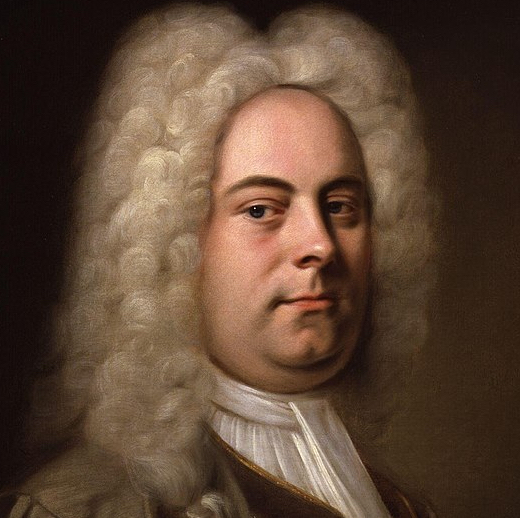 As always, we turn to Handel’s
Messiah
for the finale to our first half: the concluding Hallelujah
chorus from
Part II of the oratorio. This chorus, undoubtedly the
single most famous work
by Handel, has been a sensation since the first
performance of Messiah
in Dublin in 1742. 50 years
later, while on tour in England, Joseph Haydn heard a
festival performance of Messiah in
May of 1791, and was profoundly moved: bursting into
tears during the Hallelujah
chorus. (The experience
was a primary inspiration for his own great oratorio, The Creation, of 1798.) The chorus is
heard today in contexts that
Handel—tireless self-promoter though he was—never
dreamed of: movies, TV ads
and sitcoms, and in cover versions in styles ranging
from gospel and jazz to
rock, punk, and rap. The music is in no danger of
becoming a mere cliché,
however: it remains true to Handel’s original intent.
Following the first
performance of Messiah
in London, the
composer remarked: “My Lord, I should be sorry if I only
entertained them. I
wished to make them better.”
As always, we turn to Handel’s
Messiah
for the finale to our first half: the concluding Hallelujah
chorus from
Part II of the oratorio. This chorus, undoubtedly the
single most famous work
by Handel, has been a sensation since the first
performance of Messiah
in Dublin in 1742. 50 years
later, while on tour in England, Joseph Haydn heard a
festival performance of Messiah in
May of 1791, and was profoundly moved: bursting into
tears during the Hallelujah
chorus. (The experience
was a primary inspiration for his own great oratorio, The Creation, of 1798.) The chorus is
heard today in contexts that
Handel—tireless self-promoter though he was—never
dreamed of: movies, TV ads
and sitcoms, and in cover versions in styles ranging
from gospel and jazz to
rock, punk, and rap. The music is in no danger of
becoming a mere cliché,
however: it remains true to Handel’s original intent.
Following the first
performance of Messiah
in London, the
composer remarked: “My Lord, I should be sorry if I only
entertained them. I
wished to make them better.”
 Most of our notions about Santa and his
standard operating
procedures—reindeer, rooftops, and chimneys—come straight
from Clement Clark
Moore’s classic 1823 poem A Visit From
St. Nicholas, better known today as ‘Twas the Night
Before Christmas. There
were many musical settings, but the best-known was written
by Ken Darby,
a successful film and choral
composer throughout the 1940s and 1950s. Darby’s version
became a huge hit for
Fred Waring and the Pennsylvanians in 1942, in a colorful
arrangement heard
here, created by Waring’s arranger Harry
Simeone. The version heard here was further adapted
by William Schoenfeld
Most of our notions about Santa and his
standard operating
procedures—reindeer, rooftops, and chimneys—come straight
from Clement Clark
Moore’s classic 1823 poem A Visit From
St. Nicholas, better known today as ‘Twas the Night
Before Christmas. There
were many musical settings, but the best-known was written
by Ken Darby,
a successful film and choral
composer throughout the 1940s and 1950s. Darby’s version
became a huge hit for
Fred Waring and the Pennsylvanians in 1942, in a colorful
arrangement heard
here, created by Waring’s arranger Harry
Simeone. The version heard here was further adapted
by William Schoenfeld
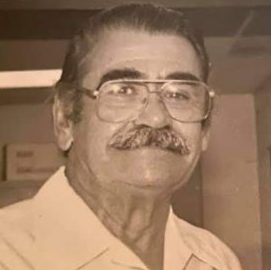 Amaury Veray
Torregrosa was
a leading figure in
Puerto Rican music from the 1950s through his death in
1995. A composer, singer,
teacher, and writer, Veray was an advocate for
preserving traditional Puerto
Rican forms in contemporary music. He
composed his most famous song, the Villancico
Yaucano
(Song
of a Man from Yauco) on Christmas Eve in 1951,
when he was leader of a
church choir in the small coastal city of Yauco, his
home town. The villancico
was a musical form that
originated in medieval Spain, but by the 20th century, villancicos were generally simple
Christmas songs in both Spain and
Latin America. Veray’s Villancico Yaucano,
sung by a humble peasant to the newborn Jesus, is heard
here in a new
arrangement by Scott Gendel.
Amaury Veray
Torregrosa was
a leading figure in
Puerto Rican music from the 1950s through his death in
1995. A composer, singer,
teacher, and writer, Veray was an advocate for
preserving traditional Puerto
Rican forms in contemporary music. He
composed his most famous song, the Villancico
Yaucano
(Song
of a Man from Yauco) on Christmas Eve in 1951,
when he was leader of a
church choir in the small coastal city of Yauco, his
home town. The villancico
was a musical form that
originated in medieval Spain, but by the 20th century, villancicos were generally simple
Christmas songs in both Spain and
Latin America. Veray’s Villancico Yaucano,
sung by a humble peasant to the newborn Jesus, is heard
here in a new
arrangement by Scott Gendel.
The Christmas Song (Chestnuts
Roasting on an Open Fire), with all of those
cozy wintertime images,
was actually written during the roasting heat of a
California summer. In his
autobiography, Mel
Tormé related the
story of how in July 1945, he drove to the home of his
lyricist and
collaborator Robert Wells in Toluca Lake. He found the
lyrics lying on the
piano, and when Wells finally appeared sweating and hot
even in shorts and a
t-shirt, he told Torme: “It was
so damn hot today, I
thought I’d write something to cool myself off. All I
could think of was
Christmas and cold weather.” Tormé replied: “You know,
this just might make a
song.” The
Christmas Song was written
in about 45 minutes later that day. Tormé quickly showed
the song to his friend
Nat Cole, whose 1946 hit recording is now a beloved
holiday classic.
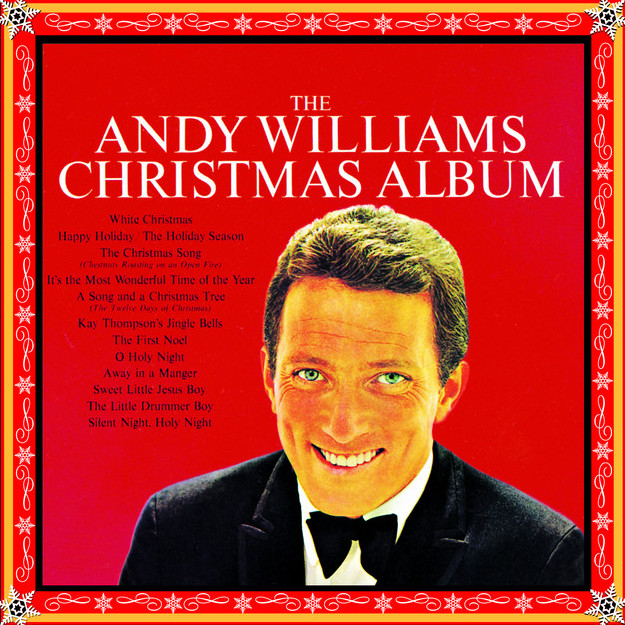 In 1963, singer Andy Williams recorded Happy
Holiday / It’s the Holiday
Season, a medley that brought together a pair
of holiday songs from the
1940s. Happy
Holiday was written by
the great American songwriter Irving
Berlin, and it was introduced in the 1942 Paramount
movie musical Holiday
Inn, where it was crooned by
Bing Crosby. Though its popularity was dwarfed by the
film’s greatest hit, White Christmas,
Crosby’s recording of Happy Holiday was
a respectable hit as
well, and other singers had covered it by 1963. It’s the Holiday Season was written in 1945
by Kay Thompson. She was a successful actress
and dancer, and music
director, and songwriter. She had been closely associated
with Williams since
1947, when a 20-year-old Williams and his three brothers
started touring with
Thompson as a nightclub act. (Thompson became a mentor to
Williams, and helped
him to develop a solo career in the 1950s.) Thompson sang
It’s the Holiday Season a few times in the
1940s, but it was not
recorded until she combined it with Berlin’s Happy Holiday in 1963 and gave it to
Williams. It became a
tremendous hit for Williams that year, together with his
cover of It’s the
Most Wonderful Time of the Year.
(These cheerful songs seem to have been a welcome escape
for Americans still reeling
from the Kennedy assassination.) Their popularity led to
several hit Christmas
albums by Williams, and a series of equally successful
television Christmas
aired from the 1960s through the 1980s—all of which earned
Williams the
nickname “Mr. Christmas!”
In 1963, singer Andy Williams recorded Happy
Holiday / It’s the Holiday
Season, a medley that brought together a pair
of holiday songs from the
1940s. Happy
Holiday was written by
the great American songwriter Irving
Berlin, and it was introduced in the 1942 Paramount
movie musical Holiday
Inn, where it was crooned by
Bing Crosby. Though its popularity was dwarfed by the
film’s greatest hit, White Christmas,
Crosby’s recording of Happy Holiday was
a respectable hit as
well, and other singers had covered it by 1963. It’s the Holiday Season was written in 1945
by Kay Thompson. She was a successful actress
and dancer, and music
director, and songwriter. She had been closely associated
with Williams since
1947, when a 20-year-old Williams and his three brothers
started touring with
Thompson as a nightclub act. (Thompson became a mentor to
Williams, and helped
him to develop a solo career in the 1950s.) Thompson sang
It’s the Holiday Season a few times in the
1940s, but it was not
recorded until she combined it with Berlin’s Happy Holiday in 1963 and gave it to
Williams. It became a
tremendous hit for Williams that year, together with his
cover of It’s the
Most Wonderful Time of the Year.
(These cheerful songs seem to have been a welcome escape
for Americans still reeling
from the Kennedy assassination.) Their popularity led to
several hit Christmas
albums by Williams, and a series of equally successful
television Christmas
aired from the 1960s through the 1980s—all of which earned
Williams the
nickname “Mr. Christmas!”
 We close, as usual with a rousing Gospel
finale led by the
Mt. Zion Gospel Choir, singing music arranged for the MSO
by its codirector Leotha
Stanley. The set opens with a
pair of Stanley originals, beginning with his new song Special
Christmas Love. We
introduced the second song, Christmas Peace,
at these concerts
in 2017. The final song, sung by all three choirs is the
familiar spiritual Go
Tell it on the Mountain. This
traditional song seems to have had its origins in the
early 1800s. It was
popularized by the Fisk Jubilee Singers, a remarkable
choir from Nashville’s
Fisk University, whose tours after the Civil War brought
African American music
to a worldwide audience. The most familiar version of this
spiritual was
published in 1907 by a Fisk professor and longtime
director of the Jubilee
Singers, John Wesley Work, Jr.
We close, as usual with a rousing Gospel
finale led by the
Mt. Zion Gospel Choir, singing music arranged for the MSO
by its codirector Leotha
Stanley. The set opens with a
pair of Stanley originals, beginning with his new song Special
Christmas Love. We
introduced the second song, Christmas Peace,
at these concerts
in 2017. The final song, sung by all three choirs is the
familiar spiritual Go
Tell it on the Mountain. This
traditional song seems to have had its origins in the
early 1800s. It was
popularized by the Fisk Jubilee Singers, a remarkable
choir from Nashville’s
Fisk University, whose tours after the Civil War brought
African American music
to a worldwide audience. The most familiar version of this
spiritual was
published in 1907 by a Fisk professor and longtime
director of the Jubilee
Singers, John Wesley Work, Jr.
And then, friends, it’s your
turn to sing!
________